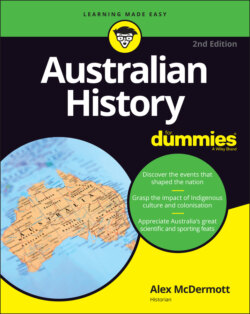Читать книгу Australian History For Dummies - Alex McDermott - Страница 22
Dreaming of ‘Australia Unlimited’
ОглавлениеBy the end of World War I, Australia was profoundly divided and strangely schizoid. Everything was jagged and everyone was on edge — the number of strikes and working days lost peaked just after the war. ‘Patriotism’ was a far more loaded term, with many ex-soldiers resenting ‘disloyals’, who were deemed to have not done everything to support Australia’s involvement in the war. Because these animosities often divided Australian society along religious, ethnic and class lines, the sense of rancour and of a nation divided was acute as the 1920s began.
Yet, the 1920s were also — in classic Charles Dickens ‘best of times, worst of times’ style — a period when Australia emerged as newly cocky about its prowess and capabilities on the world stage. Australia had ‘proved itself’ during World War I, and by the end of the conflict in 1918 had emerged as one of the elite fighting forces on the Western Front. A new expansive optimism began to prevail, which rekindled old dreams of exponential development and progress — and the ideal of ‘Australia Unlimited’ was born (see Chapter 14).
During the 1920s, Australia was frequently compared to the US, a country which appears about the same size as Australia on the map, but which had begun its history some 200 years earlier. Many argued America had blazed a trail that Australia could be expected to follow and emulate, and big plans began to be hatched. Enormous migration schemes were implemented (bringing in British migrants) and rural development projects begun. All this was largely funded by masses of government overseas borrowing, mostly from Britain.
